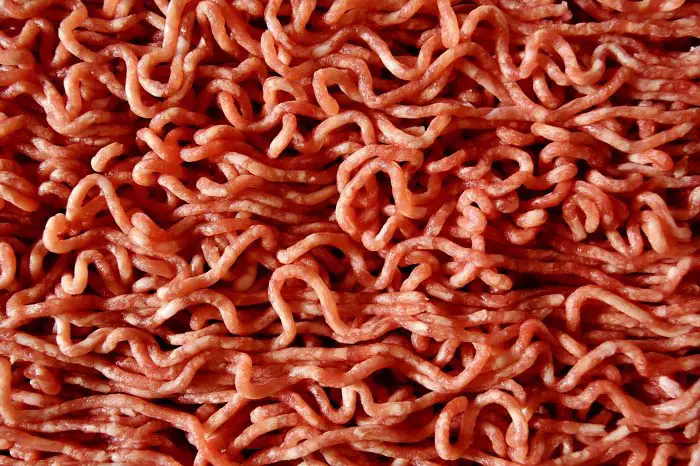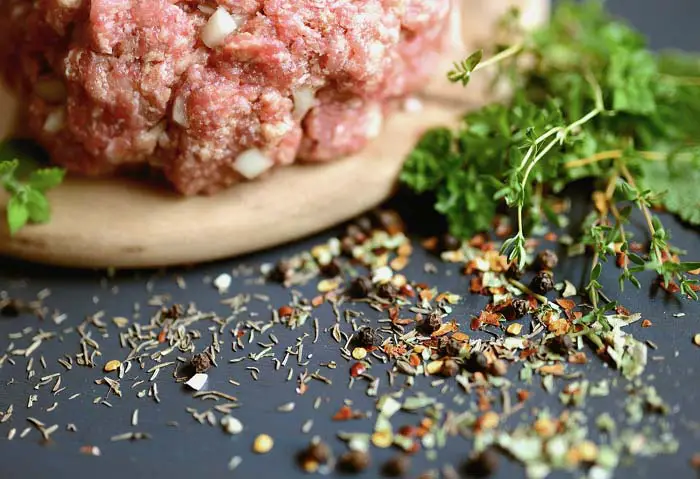Minced meat is commonly used in various sauces and marinades, including teriyaki, barbecue, and spaghetti. Meat that has been finely cut into small pieces is called “minced.” It’s versatile enough for various meals, from burgers to chili. When shopping for food, hamburgers might be the most common dish made with minced meat.
More than ever, ensuring that beef is free of harmful bacteria is crucial in light of recent and repeated E. coli scares involving the meat. Factory minced meat or meat from a local butcher shop may have harmful pathogens like E. coli. You can avoid potentially dangerous E. coli contamination if you grind your meat. You’ll enjoy the superior flavor of ground beef that hasn’t been sitting around for days.
Advantages of mincing your beef
You might assume the meat at your supermarket is freshly minced for you daily. But it’s probably been minced several days before you purchase it, if not a week. While minced meat rests in the fridge, quality and flavor are more prone to getting contaminated than freshly minced meat if you keep it on the counter for too long.
-
Home minced meats are customizable
If you mince your own meat, you can adjust its fat amount. You can even mix other meat into the mince for new flavor profiles.
-
Mincing your beef means great taste
Home-minced beef retains more flavor than purchased pre-minced beef from a butcher shop.
-
Freshly minced beef is safer
Similar to chopping vegetables, mincing meat exposes it to air. This reduces its quality and makes it more susceptible to bacterial contamination. Making mincemeat out of whole animals makes your ground beef dishes much safer.
What You Should Know Before Buying Mince

Most families rely on mince as a staple ingredient in their weekly meals. This makes it one of the most popular purchases at a butcher’s market. Its popularity stems from the fact that it’s easy to prepare and adapt to many different meals. It makes a great foundation for a wide variety of meals, including spaghetti, burgers, and more. You can use minced meat to make various dishes for a social gathering.
Nonetheless, getting your hands on some mince is not quite as easy. Buying mince requires that you know a few things.
Some examples are as follows:
-
Check the fat content
There’s a breakdown of the mince’s fat content on the label. About 20% of the weight of mince might be fat. Lower than 10% fat content is low in fat.
There is a direct correlation between the amount of fat and the amount of white bits in the mince.
Beef mince is frequently sorted into subsets according to its fat levels, such as Lean, Extra lean, low fat, and Premium.
-
Color is not an indicator of freshness
Many people go for only bright red mince because they believe that’s how fresh it is. Nonetheless, it’s important to note that brown mince is not always a sign of spoilage. When the meat turns from brilliant red to brown, it is totally at the mercy of oxygen. However, if the mince is stored correctly in the fridge, you can eat it as per the usage date because it is unquestionably healthy.
-
You should always check the label before making a purchase
Always check the label to see what kind of mince you’re getting. The type of beef, fat level, and the presence of organs or binder ingredients must all appear on mince packaging. Any butcher or grocery store should stock minced beef, hog, chicken, or lamb.
-
You should know your butcher
A crucial takeaway for consumers purchasing and cooking mince at home is to consult with their butcher. The mince’s origin, freshness, composition, and recommended uses can all be discussed with the butcher.
Having open lines of contact with your butcher is a sure way to guarantee you’re getting the freshest, highest-quality meat.
Why do you need to stop buying minced meat?
Miniature meatballs are a common ingredient in many dishes. It’s on sale in every grocery store and butcher shop, but what precisely does it consist of, and should you buy it?
What is it?
Minced meat is a great way to utilize otherwise wasted parts of the animal. Minced meat sold in supermarkets is likely to be a composite of hundreds of distinct animals. Furthermore, this product is a great way to recycle older dairy calves and other animals that wouldn’t otherwise be ideal for high-demand types of meat. The ingredients label on a package of minced meat may read “100% beef,” but it may actually comprise any number of different cuts of meat from thousands of cows.
The E. Coli Risk
Health danger is another major issue with minced meat. When the minced meat’s interior comes into contact with the meat’s unclean surface, E. Coli can enter the food chain.
If this were a small business, the danger of cross-contamination would be low. But the risk is much larger in a large processing plant where workers process a huge volume of animals. When minced beef is made, any germs on its surface quickly spread to the rest of the product.
Naturally, the danger gets bigger when a product contains multiple animal parts. Vacuum-packing and washing the meat with hot water and lactic acid are common practices. They will help to reduce contamination, although they are not foolproof.
Homemade minced meat: the benefits and drawbacks
Pros
- Minced meat can be made with any part of the animal. You’ll end up with many scraps and tough cuts of meat if you buy in bulk from local farms. This scrap meat is perfect for making mince.
- You can store freshly minced meat in the fridge or freezer as soon as you prepare it.
- Homemade ground beef saves money. Buying bulk from a nearby farmer is the first way to save money, while mincing beef alone is the second.
- Your body fat-to-mass muscle ratio is ideal.
- You know exactly which part of the meat you will mince.
Cons
- If it’s not vacuum-sealed, it won’t stay frozen for very long.
- Meat mincing is a labor-intensive process that requires time and patience. Before using a meat grinder, you must prepare it by cutting it into smaller pieces, assembling the grinder, and then cleaning it afterward.
What are the benefits and drawbacks of using fresh butcher’s mince versus store-bought minced beef?
Pros
- The ability to vacuum freeze them is simple.
- The pinkish hue of fresh minced meat is a good quality indicator (you are looking for a bright red color).
- The amount of fat in lean meat is up to you.
- Finely or coarsely minced meat is ideal, depending on the dish.
- You get to pick which cuts of meat go into the mixture.
Cons
- If it’s not vacuum-sealed, it won’t stay frozen for very long.
- If you don’t buy lesser cuts, it will be more expensive than store-bought or handmade minced meat.
Pros and drawbacks of prepackaged store-bought mince meat
Pros
- The labels have a use-by or expiration date.
- It’s quite handy.
Cons
- A wide variety of animals can be used to create the mixture.
- Bacteria can multiply more rapidly.
- The confusion about which cuts of beef are present.
- The price is higher than store-bought or handmade minced meat alternatives.
Conclusion
When you mince your burger meat, you know where the animal originated. This will allow you to control the fat content and use whichever cuts of beef you choose. These may seem like insignificant changes, but they have a major impact. In a nutshell, mincing your meat makes sure that it is the freshest and has the best balance of fat and leanness.
Plus, your bank account will appreciate it. Making your own minced meat or beef patties from whole cuts of meat is far more cost-effective than buying premade versions. Mincing your meat (pig or chicken) makes a regular burger taste extraordinary.
It’s unbelievable how simple it is to make an insanely tasty burger. As soon as you try grinding your hamburger meat, you won’t want to go back to buying it prepackaged.

